
Uchida Yoko was founded in 1910 in Dalian, China. Yoko is the Chinese term for a shop run by foreigners; at that time, the word also symbolized the frontier spirit demonstrated by those who took on the challenge of starting up a new business in a foreign country.
Kotaro Uchida was born in 1871, the second son of renowned jujutsu master Tatsuzo Munetaka Uchida of Takuhan (now the city of Taku in Saga prefecture).
This was a time when the samurai class was rapidly disappearing under the Meiji Restoration.
Having experienced grinding poverty that threatened the very survival of his family, the young Uchida was determined to make something of himself as a pioneer in the new world.
In 1893, Japan was working feverishly to achieve industrial modernization and national prosperity while building up her military capacity.
At 22 years of age, Uchida journeyed alone to Tokyo, and started working at the Yokohama Post Office run by the Ministry of Communications.
He was transferred to the Taipei Post Office in 1900, shortly after the end of the Sino-Japanese War, to work as a surveyor for the Taiwan Land Bureau, a job that saw him travelling the length and breadth of Taiwan.
Shortly after he arrived back in Japan the Russo-Japanese War broke out.
Uchida volunteered to serve in the railways field army and was dispatched to Manchuria.
When the war ended abruptly, the field army was converted into the Southern Manchurian Railway Company.
Kotaro Uchida became and employee of the Southern Manchurian Railway Company in 1907, at 36 years of age.
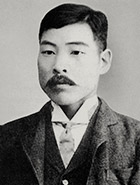
founder Kotaro Uchida
However, Kotaro Uchida quit his job at Mantetsu at the age of 38 in order to rebuild the Uchida household's business. Utilizing the skills he acquired as a surveyor, Uchida founded the independent company Suitaigo in the Chinese City of Dalian's Hitachi-cho district in 1910. Suitaigo was a seller of surveying and drawing tools, which had proved vital in Mantetsu's expansion, and this company would later become Uchida Yoko.
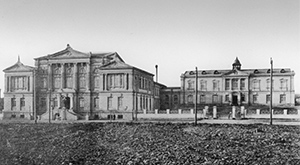
Overview of Mantetsu
The Southern Manchurian Railway Company (Mantetsu) was founded in 1906 and expanded on a wide scale to include roughly 400,000 employees throughout China, with business focused primarily on the railroad industry.
1910
Kotaro Uchida retired from Manchurian Railway at the age of 38, with the aim of reviving the Uchida family, which was his utmost desire.
In 1910, he took advantage of his technical ability as a surveyor and founded “Suitaigo” (predecessor of Uchida Yoko) in Dalian, China, a wholesaler for Manchurian Railway that distributed surveying engineering and drawing tools that were indispensable for Manchurian Railway to expand its business. After establishing its Chintao branch in 1914, it mainly operated in Manchuria and had 20 branch offices during its peak. It initially distributed famous imported goods such as the“ L.C. Smith typewriter,” “ Bates Automatic Numbering Machine,” etc. from the West.
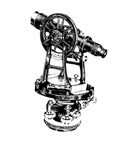
Surveying
instrument
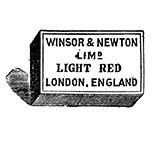
Newton design drawing
instruments
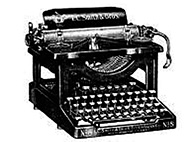
L.C. Smith typewriter
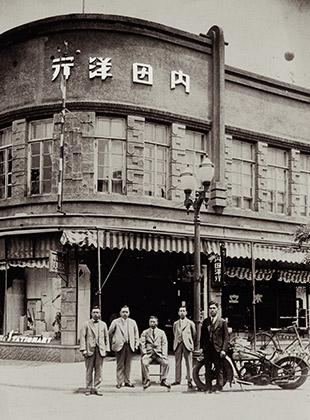
Uchida Yoko branch in Dalian
1925
It eventually became the exclusive distributor in Japan of “Hemmi Bamboo slide rule” an advanced calculator at the time that was a must-have for engineers and expanded its business. Through this development, the phrase “slide rulers = Uchida Yoko” was coined, which domestically skyrocketed its profi le. In 1927 when the domestic production of the slide ruler was further encouraged due to the prohibition of importing office equipment with the backdrop of global financial crisis, Uchida published its own PR magazine and implemented authentic high quality original products such as the first-ever domestically produced “Toho automatic number stamper,” as well as the highest-grade domestically produced “Pike top grade pencils,” “Millet Western films,” etc.
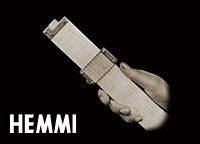
Hemmi Bamboo slide rule
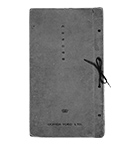
Uchida Yoko
news report
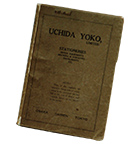
First edition
of the Uchida Yoko
company record
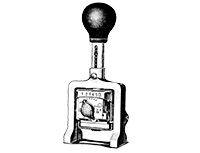
Toho automatic
number stamper
1948
The humble slide rule made a signifi cant contribution to the postwar rebuilding effort. It was formally adopted into the school curriculum, and Uchida Yoko immediately set up a national network of agencies to supply slide rules to schools. However the slide rule was subsequently abandoned under new education reforms, so the company shifted its attention to microscopes and other supplies tailored to the new emphasis on science education. Uchida Yoko helped to promote science in Japan by delivering presentations on teaching materials and classroom experiments in conjunction with local Boards of Education around the country. In addition to promoting school-based education in general, Uchida Yoko played a pioneering role in the industry with respect to equipment and facilities as well as the utilization of information in the education sector.
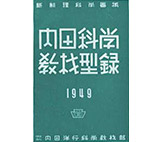
1949
Uchida Compendium of
Teaching Materials
for Science
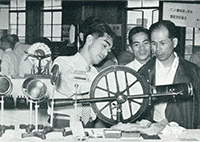
Uchida Presentation
on teaching materials
and classroom experiments
1953
Uchida Yoko produced the first Japanese-made automatic number stampers and typewriters that were marketed in the 1920s under the Toho brand. This pioneering spirit was carried on under the first president Kenmin Uchida, who launched a number of innovative products including Magic Ink in 1953, which he discovered in the United States, as well as the Kent KD drawing set from Germany, considered a premium quality product at the time. 1955 saw the release of the Taiyo Calculator, the first ever manual calculator made in Japan. Kenmin Uchida explored new avenues such as the “business show”, the first exhibition of its type in the industry.
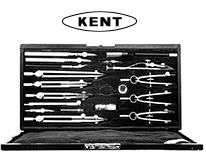
Kent drawing set
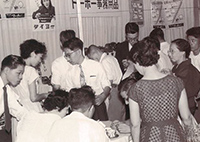
Trade show
1957
In 1957, as part of a drive to boost efficiency in industry and position Japan as a science and technology superpower, Uchida Yoko signed an agreement with Casio to become the domestic distributor of the Casio 14-A, the world’s first ever compact relay computing machine.
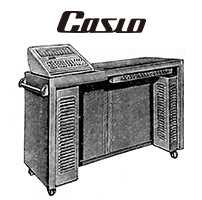
Casio 14-A
1962
Buoyed by strong sales of the relay computing machine and determined to be part of the asyet untapped domestic market for electronic computers, in 1962 Uchida Yoko launched a business tie-up with Unoke Denshi Kogyo, a manufacturer in Ishikawa prefecture that had just finished development of an early electronic computing machine. Shortly thereafter came the announcement of the first Japanese-made compact electronic computer, known as the USAC, followed by the IC mounter and a succession of new machines. Uchida Yoko played an important role in promoting the take-up of office computers in Japan by introducing industry innovations such as lease-plan sales and unbundling of hardware, software and maintenance services.
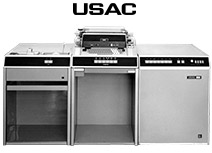
1965 USAC 1010
1963
The advent of office machines and equipment generated demand for dedicated office furniture capable designed in accordance with the speed and efficiency of the modern workplace. The first steel desks were embraced by public and private sectors alike. Next to appear was the new System Desk, followed by a succession of products modeled on the Total System concept.
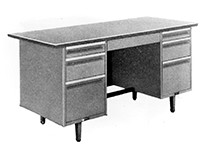
The new System Desk
1968
In April 1967 Seiko announced the USAC 10B, the first IC-only electronic calculator in Japan. In 1968, Uchida Yoko acquired distribution rights for the Seiko S-300 desktop calculating machine in conjunction with Hattori Jewelry Store. The first scientific computing machine incorporating diode transistor logic circuits to appear in Japan, the S-300 was enthusiastically received by private-sector researchers, universities and government research agencies alike.
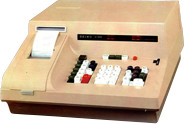
SEIKO S-300
1981
In 1981, Uchida Yoko released TES(Total Educational System), our conception of the role of computing technology in the modern classroom.This was followed in 1984 by the launch of the CAI-ACE education system, a combination of computers and other forms of education technology providing a visual and voice communication environment in five key domains: computers, linguistics, word processing, CAD and audio-visual. CAI-ACE was the first and only Japanese-produced computerbased teaching system with fully integrated hardware and software features.
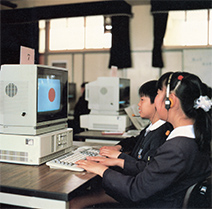
1984 CAI-ACE
1989~
Founded in 1989, the “Institute of Knowledge Collaboration,” an internal research lab, conducts investigation, research and elucidation with the goal of intellectual creation, and has been investigating and researching ways of working since its inception. By 1998 with the backdrop of experience and knowledge cultivated through collaborating with government and research agencies, as well as many years of business activities in the education field, the “Uchida Yoko Institute for Education Research” was founded, which draws the grand design of the nextgeneration educational systems.
1995~
In the year 1995, which saw the release of Windows 95, after receiving authorization from Microsoft Solution Providers and major software sellers, the Group established the company Uchida Spectrum. In 1997, the Group began selling its Super Cocktail enterprise resource planning (ERP) and core operations software, and in 1998 Uchida Esco made its debut as a publicly traded company providing multi-vendor system support for IT devices and began, as industry pioneers, promoting the spread of IT and software.
2000~
In response to widespread dissemination of the Internet in the first decade of the 2000s, the Group took part in the Ministry of Internal Affairs and Communications' 2003 EduMart Verification Testing Program, and based on the knowledge gained therein launched EduMall, an educational content provision service, in 2005. Making use of networking technologies, the Group began fullout content provision operations for schools. Later on, in pursuit of organizationwide ubiquitous information space building rooted in the concept of networkspace merging, the Group opened its Ubiquitous Co-Creative Space CANVAS facility (2008) enabling free and unrestrained utilization of ICT founded in proprietary know-how. Through these efforts, the Group established "FUTURE CLASS ROOM" practical active-learning spaces in 2010, founded on joint industry–government–academia research utilizing knowledge and experience from the education industry.
The Group launched its industry-first Change Working Consulting Services in 2010, consisting of consulting services aimed at working-style revolutions that foster strong yet flexible organizational cultures, and in 2012 the Group embarked on its Change Working in-house proof-of-concept project for their hypotheses at their Shinkawa No.2 Office. Thereafter, they began developing their conference room platform technology. Uchida Yoko continues to reform its business operations with the goal of creating value from data and collaborating in the design of knowledge.
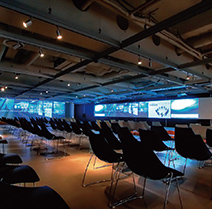
Ubiquitous Co-Creative Space CANVAS in Tokyo (2008)
2021~
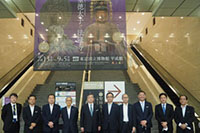
Tokyo National MuseumThe 1400th Anniversary of
Prince ShotokuSpecial exhibition
'Prince Shotoku and Horyuji Temple’
Sponsored by Uchida Yoko
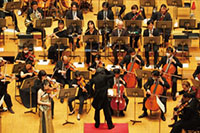
Japan Philharmonic Orchestra
111th Anniversary of Uchida Yoko
Classic Concert